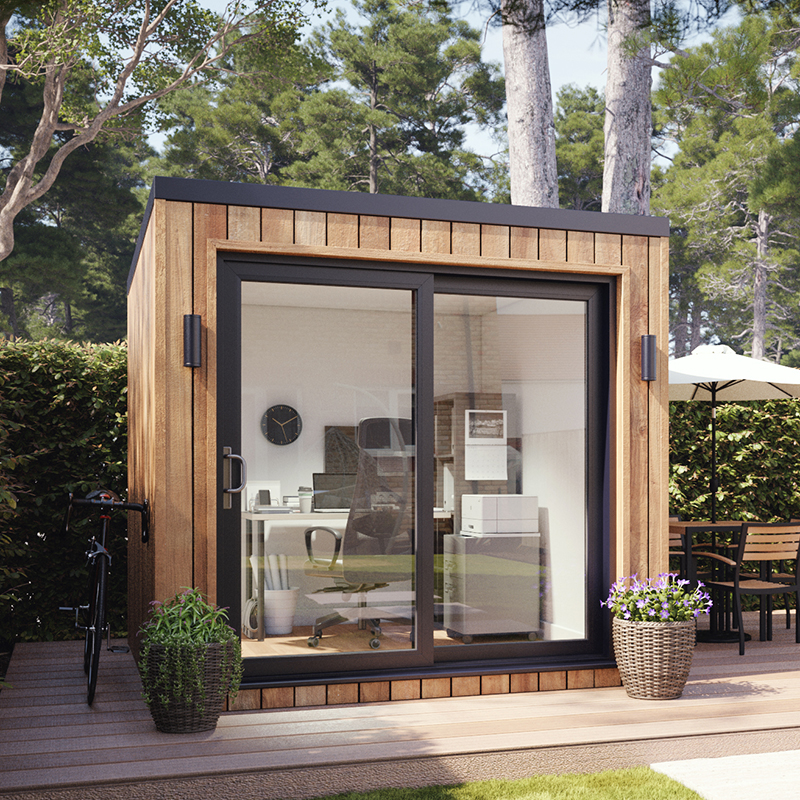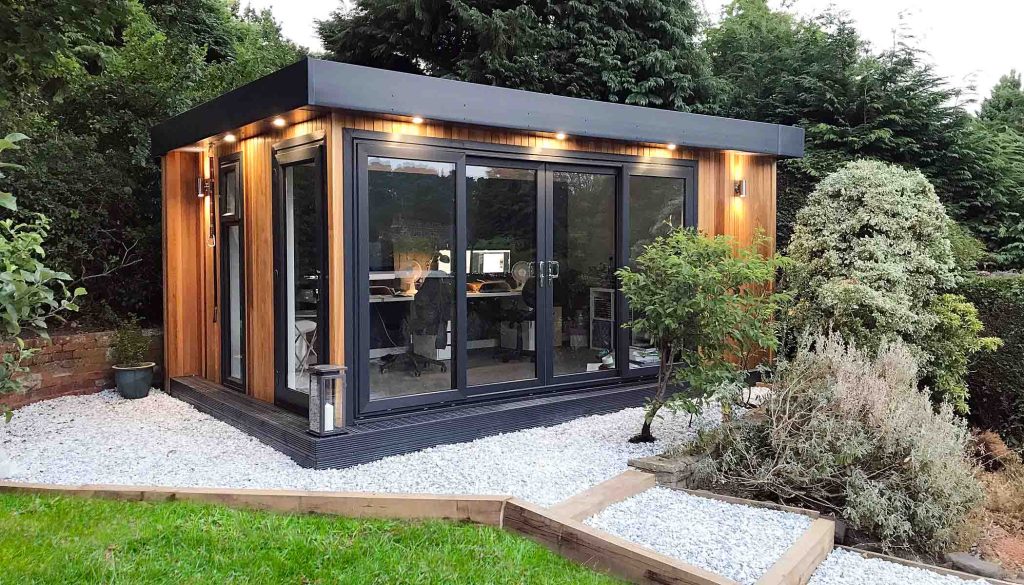Top Reasons On Planning Permission On Garden Conservatories
Top Reasons On Planning Permission On Garden Conservatories
Blog Article
What Kind Of Restrictions Do You Have For Garden Rooms And Other Areas.?
Size restrictions on specific areas are commonly used to determine whether you need planning approval when making garden rooms, conservatories or outhouses. Here's an overview of some typical size-related factors you might have to take into consideration when seeking permission to plan.
If the outbuilding is detached the planning permission is typically required if the total area of the proposed construction as well as any other existing outbuildings, exceeds 50 percent of the total surface of the land around the house (excluding the footprint of the house itself).
Height Restrictions
Single-story construction: Maximum eaves height must not exceed 2.5 meters. The overall ceiling's height must not exceed 4 meters if it is a dual-pitched pitch or 3 meters in the absence of.
A building that is less than 2 meters away from the property's boundary must not be more than 2.5 meters in size.
Floor Area:
Structures with a floor area greater than 30 square meters might require building regulations approval, even when planning permission isn't required.
Distance from boundaries:
If the structure is not more than 2 meters away from a boundary, a planning permit is required when the height exceeds 2.5 meters.
Building Use
Although the size of garden rooms isn't the only thing to consider the purpose of their use could affect whether planning approval is needed. Planning permission could be required if, for instance the structure is designed to be used as a commercial or residential space.
Permitted Development Rights:
Under Permitted Development Rights (which allow certain types of work without the need for a full planning application) Certain size restrictions and restrictions apply. These rights vary depending on the location of the property a conservation area or subject to other restrictions.
Conservatories, extensions and other types of conservatories:
For a single-story rear extension the maximum depth is typically 4 metres for detached houses and 3 meters for semi detached or terraced houses. This can be increased by 8 meters for detached houses and by 6 feet for semi detached or terraced homes, based on the specifics.
The rear extension of a single-story building must not be higher than 4 meters.
Side Extensions
For side extensions, the width and height must not exceed four meters.
Limitations on volume:
In certain areas (such as Conservation Areas and Areas of Outstanding Natural Beauty), a building addition that increases the dimensions of the original home by more than ten percent (10%) or fifty cubic meters (whichever amount is greater) is required to obtain planning approval.
Front Extensions:
Extensions that extend over the front of the original home facing the road will often require planning permission.
It's important to confirm the local authorities since regulations vary based the location you reside in and the conditions on the property. Building regulations approval could be required even when the planning permission is not required. This could be due to security or structural reasons. Check out the recommended how close to a boundary can my garden room be? for site examples including costco garden buildings, Tring garden rooms, small garden office, 4m x 4m garden room, what size garden room without planning permission, garden outhouses, ground screws vs concrete base, garden room vs extension, how to get power to a garden room, out house for garden and more.
What Height Restrictions Must You Be Aware Of When You Design Gardens?
The size of the garden rooms and conservatories as well outhouses, office buildings or extensions will determine if or not a planning permit is needed. Here are the most important height-related criteria to be aware of General Height Limits:
A detached outbuilding, or an extension with a dual pitched roof (such as a Gable) must not be taller than 4 meters.
For all other types of roof (flat, single-pitched, etc. For all other types (flat or single pitched etc. ) The ceiling height cannot exceed three meters.
Proximity to boundaries
The maximal height of a structure that is not more than 2 meters away from the boundary should not be more than 2.5 meters. This applies to sheds, garden rooms and similar outbuildings.
Eaves Height
The maximum height of eaves (the space between the smallest portion of the roof and the eaves) cannot exceed 2.5 metres for any building.
Conservatories and extensions:
The maximum height of a single-story rear extension is 4 meters. This is inclusive of the roof and any parapet walls.
Side Extensions
The side extensions are limited to be 4 meters tall and can not be wider than half the original house.
Special Roofs
Flat roof structures are generally restricted to a maximum height of 3 meters.
Additional Restrictions on Specialized Areas
In conservation zones, in Areas of Outstanding Natural Beauty(AONB) and other designated areas, more stringent restrictions on height may apply and planning approval may be required for buildings that would otherwise fall within permitted development rights.
Buildings at National Parks
National Parks, like designated areas, could have height limitations in addition to those that require approval for planning.
Design for the Roof
The height of the highest point of roof (excluding chimneys and antennas) It is important to consider the size of the roof. Planning permission could be required if the top elevation of the structure is higher than the permitted building limits.
Neighbours affected:
Even if an object is within the permitted maximum height, planning permission might still be needed if the effect on neighboring properties' privacy views, sunlight or privacy is substantial.
Maximum Overall Height
The total height of any structure should not be more than 4 meters. For example, a garden with a dual-pitched rooftop is not allowed to be taller than 4 meters at its highest point.
Decking and Platforms
In order for the structure to not need permission for development The decking or platform attached must not be higher than 0.3 meters above ground.
Always check with the local authority for planning to inquire regarding any changes to regulations and specific rules. Even if a project is covered by general permitted development rights, certain requirements or local variations might require planning permission. View the most popular what is a garden room extension for more examples including luxury outhouse, garden room planning permission, garden out house, composite summer house, garden outhouses, costco garden room, garden rooms, garden room planning permission, garden room planning permission, garden room planning permission and more.
What Permits Do I Need For Garden Areas, Etc. With Regard To Agricultural Lands
You must consider the following restrictions and planning permission requirements when you are creating a garden room conservatory, outhouse, garden office, or an extension on agricultural property. These are the most important points to be considered The following: Change of Use
Land designated for agriculture is generally used to be used for farming and other related activities. Planning permission is typically required to change the purpose of the land from agriculture to residential or garden structures. This is because it requires a change in its intended agricultural purpose.
Permitted Development Rights:
Residential and agricultural land are subject to different permitted developments. Certain kinds of agricultural structures can be built without full planning approval, but it is typically only for agricultural structures, not offices or garden spaces for residential use.
Size and Scale
The scale and size of the proposed structure will influence whether planning permission is needed. The likelihood of requiring permission is greater for larger buildings and those that take up a substantial area of land.
Impact on the agriculture sector:
Planning permission is likely to be required when the proposed structure is incompatible with the agricultural use of the land, such as reducing the area that is available for cropping or livestock.
Green Belt Land:
If agricultural land is classified as Green Belt, additional restrictions are in place to limit urban sprawl. Green Belt land is subject to strict criteria and planning permission for new structures.
Design and Appearance
The design and appearance should be in keeping with the rural characteristics of the region. Planning permission will ensure that the proposed building doesn't adversely affect the landscape.
Environmental Impact:
Any construction on agricultural land should be considered with regard to its environmental impact. If you're applying for planning permission An environmental impact study might be required to make certain that the construction will not cause harm to ecosystems of the area.
Near Existing Buildings
The planning requirements could be impacted by the close proximity of a proposed garden office or room to an existing agricultural building. Buildings that are located near farms are viewed differently from those built on open fields.
Access and Infrastructure
It is important to be aware of the impact on infrastructure, like roads, water, and waste management. The planning permit will decide whether the infrastructure in place can accommodate a building.
Class Order:
Planning law specifies the use classes that are applicable to agricultural land. Planning permission is typically required to change the use class of a building to one that is not into the category of agriculture.
Local Planning Policies
Local planning authorities have specific policies pertaining to agricultural land. Planning permits are granted for non-agricultural structures, based on these policies and take into account the local development plans as well as community needs.
National Planning Policy Framework (NPPF):
In the UK, the National Planning Policy Framework provides guidelines for how land should be developed and used. The planning permission granted to agricultural structures will be assessed according to NPPF which focuses on sustainability and rural area protection.
In summary the simplest way, a permit for planning is needed for the construction of greenhouses, garden rooms outhouses, extension of garden offices on agricultural land. This permission is necessary in order to make sure that land uses are modified and in line with national and local policies. Consulting with the local authority for planning is vital to identify the requirements specific to your area and receive the necessary approvals. Have a look at the most popular herts garden buildings for site examples including garden rooms, garden room planning permission, ground screws vs concrete, conservatories and garden rooms, outhouse builders, myouthouse, out house, garden room permitted development, small garden office, Tring garden rooms and more.